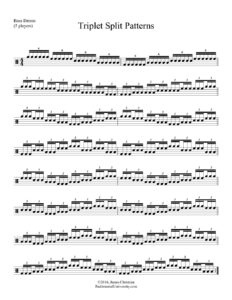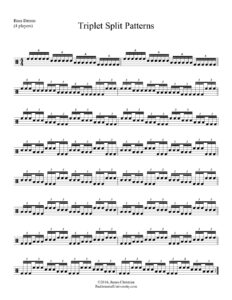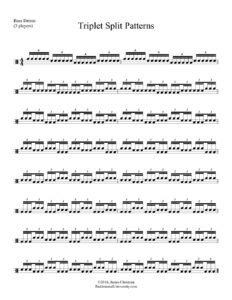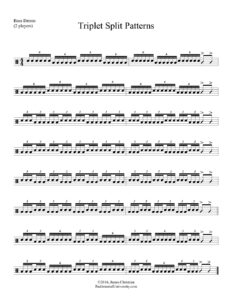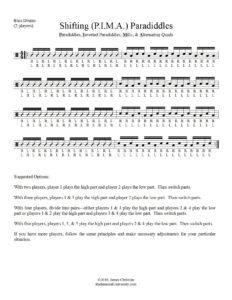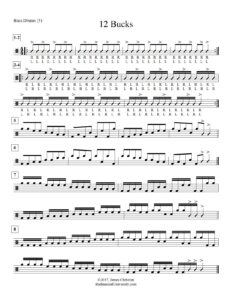
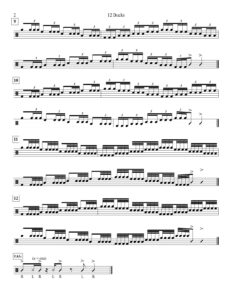
This fun bass exercise can be played with the snare and tenor exercises posted yesterday, or it can stand alone as a good splitting workout for five players. As the title indicates, there are 12 sections, and each has a specific focus:
- Sections 1-2: Unison one-handed accented 8th notes. Focus on maintaining a clear distinction between accents and taps. Keep your taps controlled and close to the drum. Make sure your accents are strong, not wimpy. Matching stick heights and angles will help in staying together.
- Sections 3-4: Unison alternating accented 16th notes. This should follow the exact same technique as sections 1-2, except the opposite hand is now “filling in” the 16th notes. All taps should be consistently at the same height and volume. Keep the accents strong and the taps consistently softer.
- Sections 5-6: Split 8th note patterns. Focus on precise note placing. Mentally subdividing the beat is essential.
- Sections 7-8: Split 16th note patterns. Make sure the 16th notes are placed exactly in time, so that the transitions from player to player are smooth.
- Sections 9-10: Split 16th note triplet patterns. Once again, take care to maintain precise note spacing. Be careful not to “crush” or “stretch” the triplets.
- Sections 11-12: Split 32nd note patterns. As the note speed increases, technique becomes even more important. Maintain control without becoming rigid. Stay relaxed without becoming sloppy. Take care to achieve clarity on every single note.
Happy splitting!

